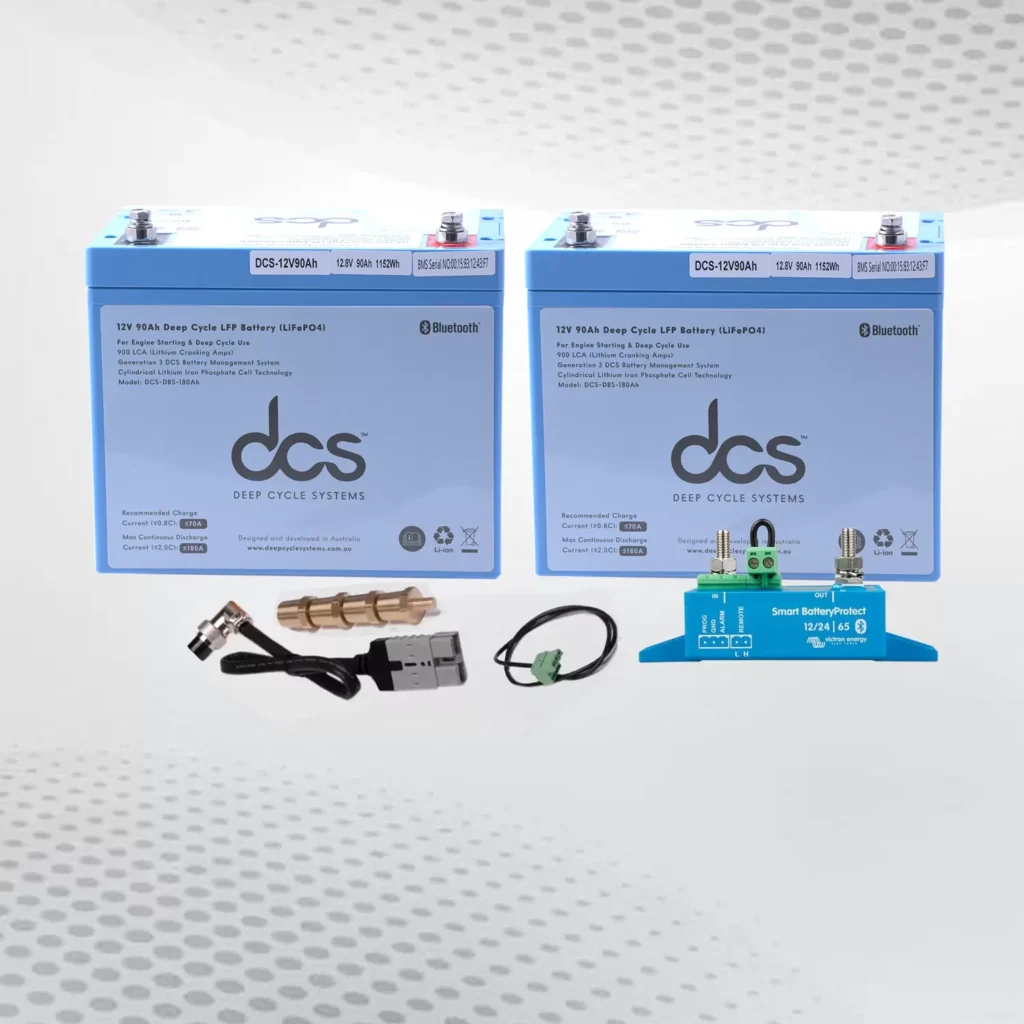Lithium batteries have become integral to our daily lives, powering everything from smartphones to electric vehicles. Understanding how to use and care for these batteries properly ensures their longevity and safety. In this guide, we will walk you through the steps to navigate the use and care of lithium batteries. We will demystify concepts such as charging cycles and discuss practical ways to prevent overheating. Let’s begin the journey towards optimising your Lithium Battery performance.
Understanding the Basics of Lithium Batteries
At the heart of the burgeoning field of portable and renewable energy sources lies the Lithium-Battery, a cornerstone of modern power storage solutions. Central to comprehending its operation is an insight into its key components: the anode, cathode, and electrolyte, which facilitate the flow of lithium ions between them during charge and discharge cycles.
The anode, typically made from carbon, serves as the negative electrode, while the cathode, composed of a lithium metal oxide, acts as the positive electrode. The electrolyte, a lithium salt dissolved in an organic solvent, enables the crucial movement of lithium ions. This ion exchange generates electrical power as electrons flow from the anode to the cathode through an external circuit.
A separator within the battery prevents direct contact between the anode and cathode, averting short circuits whilst allowing ions to pass through. This sophisticated interplay of components underscores the battery’s high energy density and capacity for longer cycle life, marking a leap forward in energy storage technology. Understanding these fundamental aspects is vital for anyone looking to harness the full potential of lithium batteries in various applications.
Safety First – Recognising the Hazards
Lithium batteries, whilst pivotal in the evolution of energy storage and mobile technology, carry intrinsic risks that demand respect and understanding from users. Awareness of the potential dangers, such as thermal runaway—a condition where the battery overheats and potentially catches fire or explodes—is crucial. This phenomenon can result from mishandling, such as puncturing, overcharging, or exposure to high temperatures.
Furthermore, short-circuiting, often caused by bringing metallic objects into contact with the battery’s terminals, can lead to rapid overheating and damage. To mitigate these risks, adhere to recommended practices, including utilising chargers explicitly designed for the battery, refraining from exposing it to water or excessive heat, and ensuring that the battery is not subjected to mechanical stress. Knowledge and adherence to these safety measures not only extend the life of lithium batteries but also ensure the safety of their users.
Charging Your Lithium-Battery Correctly
Ensuring your Lithium-Battery is charged correctly is pivotal for sustaining its efficacy and longevity. To eschew the perils of overcharging, it is imperative to adhere closely to the directives provided by the manufacturer concerning charging rates and voltages. Overcharging can precipitate degradation of the battery’s internal structure and elevate the risk of potential safety hazards, such as thermal runaway.
Utilisation of a portable charger is a necessity; this minimises damaging the battery through inappropriate voltage or current delivery. It is advisable to only resort to fast charging options if the manufacturer specifies them as suitable for your particular battery. Fast charging, though convenient, can exert undue stress on the battery, accelerating wear and tear over time.
Moreover, removing the battery from the charger once it has reached its total capacity is beneficial. Continual connection beyond the completion of a charge cycle can lead to overvoltage, fostering an environment conducive to battery deterioration.
By embracing these guidelines, you can significantly enhance the operational life of your Lithium-Battery, ensuring that it continues to provide reliable service in your devices for an extended period.
Maximising Battery Life – Best Practices
Prudent practices are advisable to optimise the life of a Lithium-Battery. One crucial strategy is to avoid allowing the battery to undergo complete discharges; it is preferable to recharge the battery before it fully drains. Keeping the battery within a moderate charge level, typically between 20% and 80%, can significantly deter the stress that leads to rapid degradation.
Another vital aspect is the environment in which the battery is stored and operated. Extreme high and low temperatures can be detrimental to the battery’s health and capacity. Keeping the battery in a temperate environment, ideally at room temperature, is recommended. Extreme cold can reduce the battery’s efficacy, and extreme heat can accelerate the loss of capacity.
Moreover, the battery will not be used for an extended period. In that case, storing it at a partial charge state, around 50%, is suggested to minimise capaminimises over time. This approach aids in maintaining the battery’s electrochemical balance, thereby preventing the battery from entering a deep discharge state that can be challenging to recover from.
Frequent monitoring of the battery’s charge level and avoiding exposure to moisture and direct sunlight also play a critical role in extending the lifespan of a Lithium-Battery. By adhering to these guidelines, users can ensure that their batteries remain functional and efficient over an extended period.
Storage Guidelines for Lithium Batteries
Following these guidelines helps ensure that lithium batteries remain safe, reliable, and effective throughout their storage period. Here are five essential guidelines for storing lithium batteries:
Avoid Extreme Temperatures
Store lithium batteries in a cool, dry place. Extreme hot and cold temperatures can degrade battery performance and reduce overall lifespan.
Partial Discharge for Long-Term Storage
If storing for an extended period, partially discharge the battery to around 50% of its capacity. This helps prevent over-discharge during storage, which can damage lithium batteries.
Use Original Packaging or Insulation
Store lithium batteries in their original packaging or use insulation materials to prevent physical damage or short circuits if possible.
Avoid Humidity and Moisture
Keep lithium batteries away from humid or wet environments. Moisture can lead to corrosion and hazardous electrical shorts.
Regular Check-ups
Periodically check stored batteries to ensure they maintain their charge level. If stored for long periods, consider charging them to around 50% capacity every six months to maintain optimal performance.
Disposal and Recycling of Lithium Batteries
The appropriate disposal and recycling of lithium batteries are critical to mitigating their environmental impact. If improperly discarded, lithium batteries pose significant hazards due to the toxic and reactive elements they contain. Acknowledging that these batteries should never be disposed of alongside general waste or household recycling is crucial.
Instead, special care must ensure they are brought to designated recycling facilities equipped to handle their complex chemistry. Many communities offer dedicated recycling programmes or drop-off points specifically for batteries, aiming to recover valuable materials and prevent contamination of landfills and the environment. It’s advisable to consult local waste management authorities or environmental organisations on where and how to recycle lithium batteries in your area.
Some retailers and manufacturers also offer take-back schemes, encouraging consumers to return spent batteries for responsible recycling. Engaging with these services contributes to environmental preservation and supports the circular economy, advancing a more sustainable and responsible use of resources.
Troubleshooting Common Deep Cycle Battery Issues
Troubleshooting deep-cycle batteries can help extend their lifespan and maintain their efficiency. Here are five common issues and their solutions:
Sulfation
This occurs when sulphate crystals build up on the Deep Cycle Battery plates, reducing capacity and performance.
- Solution: Regularly charge batteries fully and avoid deep discharges. Desulfation or equalisation is used to dissolve sulphate crystals.
Low Electrolyte Levels
Insufficient electrolytes can lead to poor battery performance.
- Solution: Check and maintain electrolyte levels regularly. Use distilled water to top up if necessary, but do not overfill.
Corrosion
Corrosion on terminals and connectors can hinder electrical conductivity.
- Solution: Clean terminals and connectors with baking soda and water. Apply a corrosion inhibitor or petroleum jelly to prevent future corrosion.
Overcharging or Undercharging
Improper charging can damage deep-cycle batteries.
- Solution: Use a suitable charger designed for deep-cycle batteries. Avoid overcharging by using charge controllers or intelligent chargers.
Physical Damage
Damage to the battery casing or internal components can lead to performance issues.
- Solution: Inspect batteries regularly for signs of physical damage. Replace damaged batteries promptly to prevent further issues.
Revolutionising Energy Storage with Lithium Batteries
The arrival of lithium batteries in energy storage systems has been a game-changer in how we harness and use power. With their deployment in an array of applications, from solar power setups to electric vehicles and even large-scale grid storage solutions, these batteries are pivotal in our shift towards renewable energy sources. Their superior energy density compared to traditional battery technologies allows for more compact and efficient power storage.
This efficiency is crucial in making renewable energy sources like solar and wind more viable and reliable, as they enable the storage of excess energy generated during peak times for use during periods of low generation. Furthermore, the longevity and durability of lithium batteries underpin their suitability for applications where consistent and reliable energy storage is critical.
As the world increasingly turns to green energy solutions to combat climate movements, the role of lithium batteries in facilitating this transition cannot be overstated. They not only offer a path to reducing our carbon footprint but also hold the key to unlocking the full potential of renewable energy technologies, ushering in a new era of energy independence and sustainability.
Lithium Batteries Maintenance Tip
Maintaining the health and efficiency of lithium batteries necessitates cautious handling, particularly in terms of their charging and storage habits. A pivotal element in this regard is avoiding the extremes of charging—neither allowing the battery to reach a full 100% charge too frequently nor letting it deplete entirely before recharging. This strategy helps mitigate undue strain on the battery cells, which, in turn, can forestall the reduction in capacity over time.
Equally important is keeping the battery within a temperature range that does not exacerbate wear or impair performance. Exposing batteries to excessively high or low temperatures can adversely affect their longevity and functional capability.
Additionally, it’s beneficial to keep the battery at a partial state of charge, ideally around 50%, if it is not going to be used for a prolonged duration. This approach assists in maintaining the battery’s optimal electrochemical state, thereby preventing any potential degradation that might arise from extended periods of inactivity. By adopting these practices, users can significantly contribute to preserving their lithium batteries’ operational life and reliability.
The Future of Lithium Batteries and Emerging Technologies
The horizon for lithium batteries is brimming with potential, propelled by relentless innovation and research. Scientists are at the forefront, delving into novel materials and breakthrough technologies poised to redefine their capabilities. Solid-state electrolytes herald a future of safer, more stable battery systems with an augmented energy storage capacity.
Equally promising are developments in silicon anodes, which promise to increase battery life and reduce charging times dramatically. These advancements are not merely incremental; they represent a transformative leap forward, offering enhanced efficiency and safety features. Furthermore, exploring lithium-sulphur batteries opens new vistas for achieving higher energy densities at a lower cost, potentially revolutionising technology in myriad applications.
As we look forward, the evolution of lithium-battery technology continues to be an exciting journey, underscored by a collective drive towards sustainability and superior performance. The ongoing research and development are setting the stage for a future where energy storage is not just about capacity but also about eco-consciousness and accessibility, marking a pivotal chapter in the narrative of renewable energy solutions.
Conclusion
In conclusion, lithium batteries’ practical use and care play a pivotal role in harnessing their full potential whilst ensuring safety and longevity. By understanding the fundamentals, adhering to best practices for charging and storage, and being aware of disposal protocols, users can significantly enhance their Lithium-Battery experience. The journey towards sustainable energy solutions continuously evolves, with lithium batteries at the forefront. Embracing the advancements and innovations in this field contributes to environmental sustainability and promises to revolutionise our lives. The future of lithium batteries, teeming with potential, is undeniably bright and indispensable in our quest for clean and efficient energy sources.
FAQs
Q1: Can I use any charger with my Lithium Battery?
A: You are strongly advised to use only the charger specified by the battery’s manufacturer. Using an incompatible charger can lead to overcharging or undercharging and even pose safety risks.
Q2: How often should I charge my Lithium-Battery to ensure longevity?
A: To optimise your Lithium-Battery, maintain its charge between 20% and 80%. Avoid fully depleting the battery before recharging, and do not keep it at 100% charge for prolonged periods.
Q3: Is it safe to leave my Lithium-Battery charging overnight?
A: While most modern lithium batteries and chargers have mechanisms to prevent overcharging, removing the battery once fully charged is prudent to avoid potential risks and promote longevity.
Q4: What should I do if my Lithium-Battery starts to swell?
A: Swelling in a Lithium-Battery is a sign of failure and can be dangerous. Stop using the battery immediately and consult a professional for safe disposal or recycling. Do not attempt to puncture or dispose of the battery in household waste.
Q5: Can extreme temperatures affect my Lithium-Battery?
A: Yes, extreme temperatures, both hot and cold, can adversely affect your battery’s performance and lifespan. Store and use your battery in conditions as close to room temperature as possible.
















































